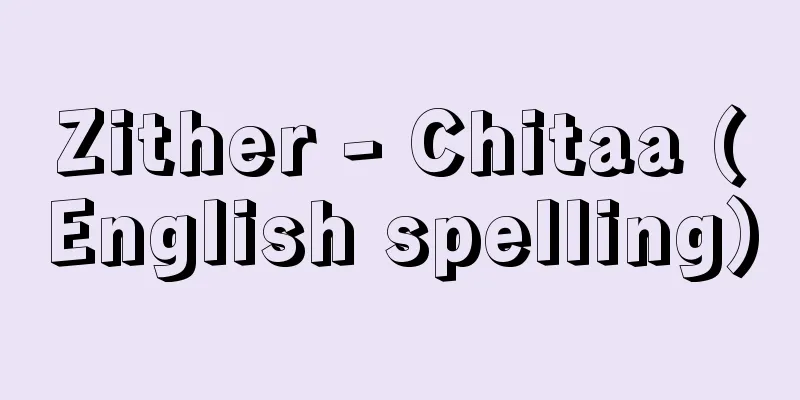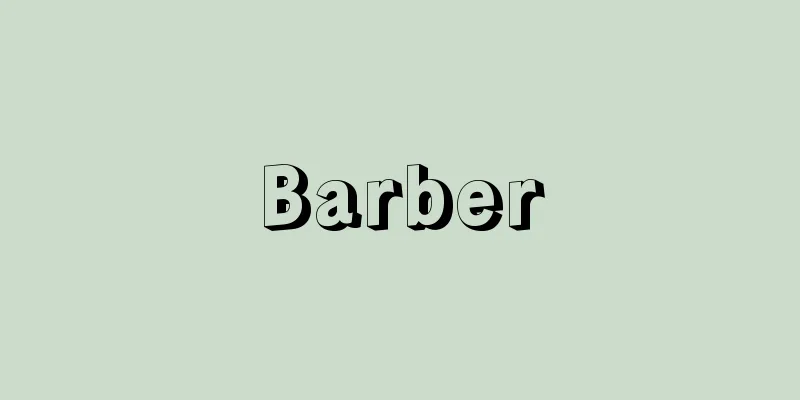Zither - Chitaa (English spelling)

|
In a broad sense, it is a classification name for stringed instruments, and in a narrow sense, it refers to a type of folk instrument from southern Germany and Austria. According to Kurt Sachs' classification of musical instruments, the zither is a general name for a stringed instrument that does not have a protruding part for stringing, and the strings are stretched almost parallel to the surface of the body between the two ends of the body. In this respect, it is distinguished from lutes, lyres, harps, etc., whose strings are stretched so that they go over or away from the surface of the body. The resonator may be the body itself or a separate body, but in the latter case, the sounding mechanism is not impaired even if the resonator is removed, which is a characteristic of the zither. In terms of shape, there are stick-shaped (such as a musical stick or bow, which usually requires a separate resonator), cylindrical (where the strings are attached to a bamboo tube or cut out from the skin), raft-shaped (cylindrical bodies tied together), and flat-shaped (the type in which the body also serves as the resonator includes zithers, dulcimers, pianos, etc. in the narrow sense). The most common method of producing sound is by plucking the strings with the fingers or a plectrum and striking the strings with a stick or hammer, but it is not uncommon to also use a bow to draw the strings. In the strict sense, a zither is a box-shaped resonator with five melody strings (made of metal and stretched over a fretted fingerboard) and 30 or more accompaniment strings (made of sheepskin or nylon). The player places the instrument horizontally on his lap or on a stand, presses down the frets with the fingers of his left hand, plays the melody with a plectrum attached to his right thumb, and plucks several open strings to create chords with the remaining fingers of his right hand. The melody strings are tuned in the Munich system (A 4 -A 4 -D 4 -G 3 -C 3 ) or the Vienna system (A 4 -D 4 -G 4 -G 3 -C 3 ), and the accompaniment strings are often tuned in intervals of fourths or fifths. In addition, an example of art music in which the zither is used in the strict sense is the waltz "Tales from the Vienna Woods" (1868) by Johann Strauss (the "King of the Waltz"); in Japan, the zither became widely known through Anton Karas's zither solo in the film music for "The Third Man" (1950). [Yoichi Yamada] Source: Shogakukan Encyclopedia Nipponica About Encyclopedia Nipponica Information | Legend |
|
広義には弦鳴楽器の分類上の呼称であり、狭義には南ドイツやオーストリアの民俗楽器の一種をさす。 クルト・ザックスの楽器分類法によると、チターとは、弦を張るための張出し部をもたず、楽器胴体の両端の間に胴面とほぼ平行に弦を張るタイプの弦鳴楽器の一般的呼称である。この点で、胴面を越えたり離れたりするように弦が張られるリュート、リラ、ハープなどと区別される。また共鳴体は、胴が兼ねることも、別に取り付けられることもあるが、後者の場合、共鳴体を取り外しても発音機構が損なわれないことがチターの特徴である。形態のうえからは、棒形(楽棒や楽弓などで、普通、別に共鳴体を必要とする)、筒形(竹筒などに弦を取り付けたり、表皮から弦を切り出したりする)、筏(いかだ)形(筒形胴を結び合わせる)、平板形(そのうちの胴が共鳴箱を兼ねるタイプに、狭義のチター、ダルシマー、ピアノなどが含まれる)などに分けられる。発音法は、指やプレクトラム(義甲)による撥弦(はつげん)と桴(ばち)やハンマーによる打弦が多いが、弓による擦弦もまれではない。 狭義のチターは、箱形共鳴胴に5本の旋律弦(金属製で、フレット付きの指板の上に張られる)と30本以上の伴奏弦(羊腸製もしくはナイロン製)を張ったもの。奏者は楽器を膝(ひざ)や台の上に水平に置き、左手指でフレットを押さえ、右手親指につけたプレクトラムで旋律を奏しつつ、残りの右手指で開放弦のなかから和音となるように数本を選んではじく。旋律弦の調弦法にはミュンヘン式(A4―A4―D4―G3―C3)やウィーン式(A4―D4―G4―G3―C3)などがあり、伴奏弦は四度もしくは五度間隔で調弦する場合が多い。 なお、狭義のチターが用いられている芸術音楽にはヨハン・シュトラウス(ワルツ王)のワルツ『ウィーンの森の物語』(1868)があり、日本では、アントン・カラスのチター独奏による『第三の男』(1950)の映画音楽によって広く知られるようになった。 [山田陽一] 出典 小学館 日本大百科全書(ニッポニカ)日本大百科全書(ニッポニカ)について 情報 | 凡例 |
<<: Cheetah - Cheetah (English spelling)
Recommend
MKSA system of units - MKSA system of units
A system of units with the meter (m) for length, t...
Toen Novel - Toenshosetsu
A collection of essays from the late Edo period. 1...
candelabrum
… [Yoshio Okada] [Western] In English it is calle...
Hindu Kush
A mountain range that runs west-southwest from the...
Li people (Li tribe) - Li tribe (English spelling) Lí zú
An ethnic minority group living on Hainan Island i...
emporium
…Such markets were the agora and forums of the an...
Cytomegalic inclusion body disease - cytomegalic inclusion body disease
⇒Congenital cytomegalovirus infection Source: Abou...
Nakatsugawa
[1] Formerly one of the branches of the lower Yodo...
Izu Shrine
(20-3, Kamigocho, Tono City, Iwate Prefecture) A r...
United Nations Environment Programme
It is a subordinate body of the United Nations Ge...
Qadiri Order
…Founder of the Qadiriyya, the first mystical ord...
Ch'oe Yǒng (English spelling)
[Born] King Chungsuk 3 (1316) [Death] 14th of Marc...
Reich
American composer. Also known as Reik. Born in New...
Kaschin-Beck disease
Also called endemic osteoarthritis. A type of ende...
Shisui [town] - Shisui
A town in Inba County in northern Chiba Prefecture...









